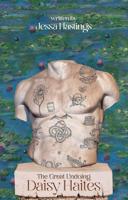Publisher's Synopsis
Excerpt from Exercises in Old English: Based Upon the Prose Texts of the Author's "First Book in Old English"
The exercises here provided fall roughly into two divis ions. The earlier ones follow somewhat closely the open ing selections of the author's First Book in Old English in respect to the words employed and the mold of sen tenoes, the particular selections being referred to by Roman numerals; the later ones deviate more widely from the cor responding selections in this respect, and will require more frequent reference to the Vocabulary provided at the end of the book. This deviation, however, is not from good usage; for the exercises under consideration are usually based upon such texts as the Gospels and Elfric's Homilies. The necessity of rendering the form of the Old English sentence unmistakable to the attentive student has some times led to a departure from familiar modern idiom, especially in the case of Scriptural passages. In a few instances this transgression of idiomatic propriety may be regarded as excessive; but perhaps it will be forgiven in view of the exigency which occasioned it. The author has intended to supply all needful assist ance in the way of syntactical references, and of the sug gestion, when doubt might arise, of the proper word. If in this respect or any other he has failed to supply the reasonable demands of the teacher or student, he will be grateful for such hints as may enable him to effect an improvement. About the Publisher Forgotten Books publishes hundreds of thousands of rare and classic books. Find more at www.forgottenbooks.com This book is a reproduction of an important historical work. Forgotten Books uses state-of-the-art technology to digitally reconstruct the work, preserving the original format whilst repairing imperfections present in the aged copy. In rare cases, an imperfection in the original, such as a blemish or missing page, may be replicated in our edition. We do, however, repair the vast majority of imperfections successfully; any imperfections that remain are intentionally left to preserve the state of such historical works.






















